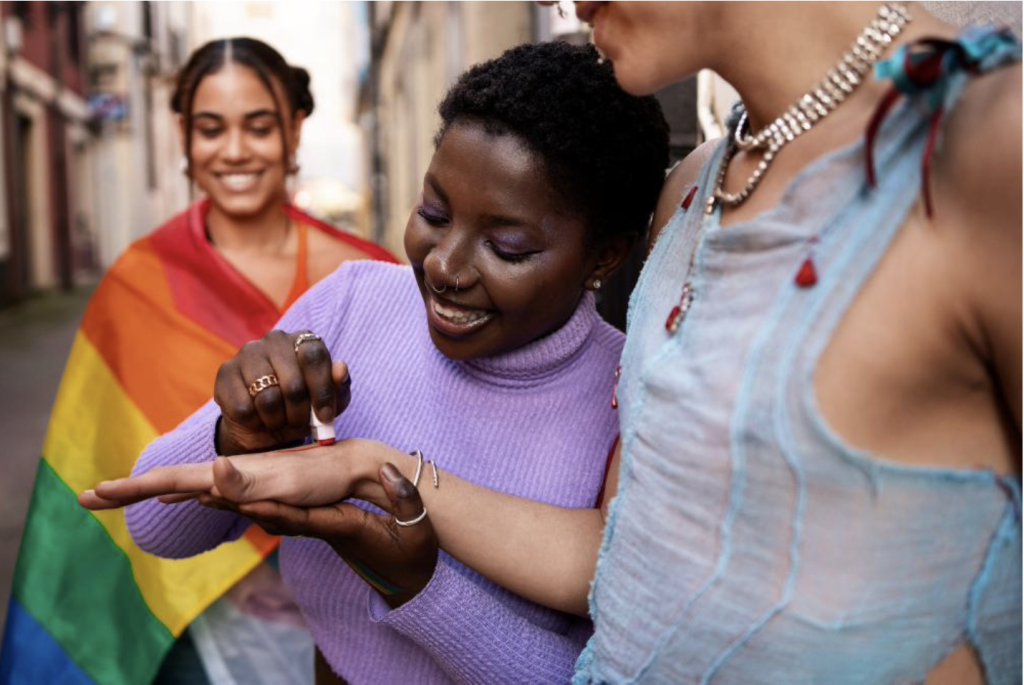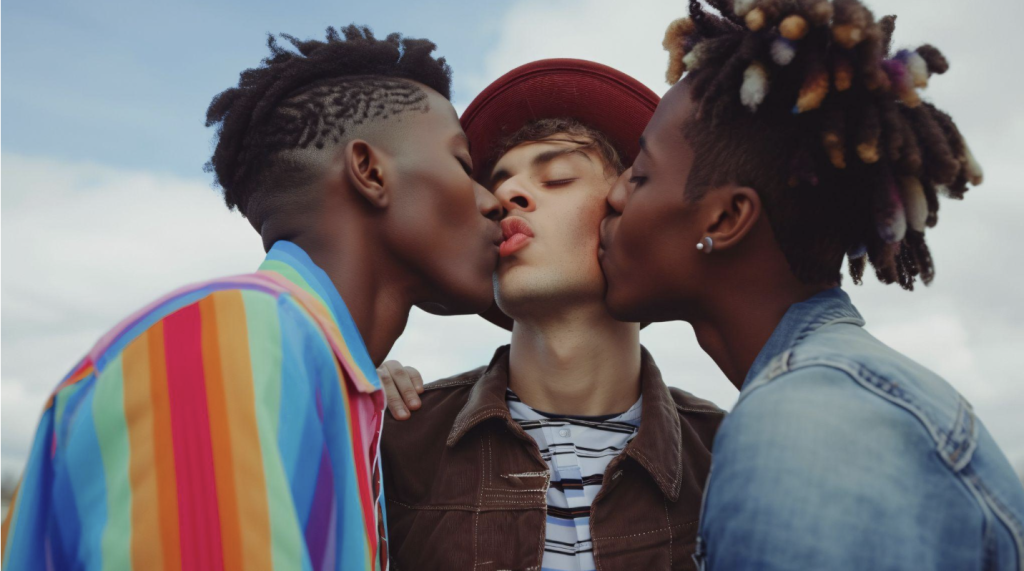
In today’s increasingly diverse and interconnected world, it is crucial to understand the complexities and nuances of identity. Intersectional Identities has emerged as a vital perspective, acknowledging that individuals possess diverse, interconnected, and overlapping identities and experiences that cannot be reduced to a single category or dimension. Within the LGBTQ+ community, Intersectionality plays a vital role in acknowledging and addressing the unique challenges and perspectives that arise from the intersection of race, gender, and sexuality.
What is Intersectionality?

Intersectionality is a theoretical framework that examines how different aspects of identity, such as race, gender, class, and sexuality, intersect and interact. It recognizes that individuals do not experience oppression or privilege based on a single identity but rather through the complex interplay of multiple identities. Intersectionality challenges the notion of a “single-issue” approach and highlights the importance of understanding the interconnected and intersecting nature of identities.
Why is Intersectionality Important for the LGBTQ+ Community?
The LGBTQ+ community is incredibly diverse, and individuals hold different identities that shape their lived experiences. By embracing Intersectionality, we can better understand the unique challenges, barriers, and forms of discrimination faced by individuals who belong to multiple marginalized groups. It also helps amplify the voices and perspectives of those historically underrepresented or overlooked within the broader LGBTQ+ movement.
Understanding Core Identities.

To fully grasp the significance of Intersectionality, it is essential to explore some core identities that intersect within the LGBTQ+ community: race and ethnicity, gender identity and expression, and sexual orientation.
Race and Ethnicity:
Race and ethnicity are deeply rooted in historical, cultural, and social contexts. They shape individuals’ experiences, perspectives, and how they navigate the world.
How Race Intersects with LGBTQ+ Identities
LGBTQ+ individuals from racial and ethnic minority groups often face compounded forms of discrimination and marginalization. They may encounter racism within the LGBTQ+ community and homophobia or transphobia within their racial or ethnic communities. This intersection can lead to unique challenges, such as increased risk of violence, barriers to accessing healthcare and social services, and heightened levels of stress and mental health concerns.
Examples of Race and LGBTQ+ Intersection
- The experiences of Black transgender women face disproportionately high rates of violence, discrimination, and poverty due to the intersection of racism, transphobia, and misogyny.
- The challenges faced by LGBTQ+ individuals from immigrant or refugee communities may navigate complex cultural expectations, language barriers, and immigration-related stress.
- The intersectional oppression experienced by Indigenous LGBTQ+ individuals, who
often confront discrimination within their communities and face systemic barriers rooted in colonialism and historical trauma.
Gender Identity and Expression:
Gender identity refers to an individual’s internal sense of being male, female, neither, or somewhere in between, while gender expression relates to how individuals outwardly present their gender through behaviour, clothing, and other external cues.
How Gender Identity Intersects with LGBTQ+ Identities.
Within the LGBTQ+ community, gender identity and expression can intersect in complex ways. Transgender and gender non-conforming individuals may face discrimination, violence, and barriers to accessing affirming healthcare and legal recognition. Additionally, the experiences of cisgender LGBTQ+ individuals can be shaped by societal expectations and norms around gender roles and expression.
Examples of Gender Identity and LGBTQ+ Intersection:
- The experiences of non-binary lesbians who may navigate the intersection of their gender identity, sexual orientation, and societal expectations around gender expression.
- The challenges faced by transgender men who are also gay or bisexual as they navigate the intersection of their gender identity, sexual orientation, and societal perceptions of masculinity.
- The unique perspectives of genderfluid or gender non-conforming individuals within theLGBTQ+ community may challenge traditional notions of gender and sexuality.
Sexual Orientation:
Sexual orientation refers to an individual’s enduring romantic, emotional, and physical attraction to others. Common sexual orientations within the LGBTQ+ community include gay, lesbian, bisexual, pansexual, and asexual.
How Sexual Orientation Intersects with LGBTQ+ Identities
While the LGBTQ+ community shares the experience of marginalization based on sexual orientation, individuals within this community can have vastly different lived experiences based on the intersection of their sexual orientation with other identities, such as race, gender, and socioeconomic status.
Examples of Sexual Orientation and LGBTQ+ Intersection
- The experiences of bisexual men of colour, who may face biphobia and racism within both mainstream and LGBTQ+ spaces.
- The challenges faced by lesbian women with disabilities who navigate the intersection of their sexual orientation, gender identity, and disability status.
- The unique perspectives of asexual individuals from different cultural backgrounds as they navigate societal expectations around sexuality and relationships.
The Impact of Intersectionality:
Facing Multiple Forms of OppressionIndividuals with intersectional identities often face multiple, compounding forms of oppression and marginalization. For example, a Black transgender woman may experience racism, transphobia, and misogyny simultaneously, creating unique challenges and barriers that cannot be fully understood by addressing only one aspect of her identity.
Access to Resources and Support
Intersectionality can also impact access to resources and support within the LGBTQ+ community. Individuals with intersectional identities may find that existing resources and spaces do not adequately address or represent their specific experiences and needs. This can lead to feelings of isolation, lack of representation, and difficulty accessing appropriate support services.
The Importance of Inclusive Advocacy.
Recognizing Intersectionality is crucial for effective advocacy and creating inclusive spaces within the LGBTQ+ movement. By centring the voices and experiences of those with intersectional identities, advocacy efforts can better address the diverse needs and challenges faced by different community segments. Inclusive Advocacy also helps to build coalitions and solidarity across various marginalized groups, amplifying the collective power for social change.
Moving Forward.
Championing Intersectionality in the LGBTQ+ Community.
To truly embrace Intersectionality within the LGBTQ+ community, creating spaces and platforms that amplify diverse voices and perspectives is essential. This can involve:
- Ensuring leadership and decision-making bodies within LGBTQ+ organizations reflect diverse intersectional identities.
- Provide educational resources and training on Intersectionality to foster greater understanding and awareness.
- Promote intersectional narratives and representation in media, literature, and cultural events.
- Facilitate open and respectful dialogues that allow for the sharing of diverse experiences and perspectives.
Creating Safe Spaces for Diverse Identities.
It is crucial to build safe and affirming spaces where individuals with intersectional identities can connect, share their experiences, and access resources tailored to their needs. This can take the form of:
- Support groups and community centres that cater to the unique experiences of intersectional identities.
- Online platforms and virtual communities that foster connection and resource-sharing across geographic boundaries.
- Inclusive events and gatherings that celebrate the diversity within the LGBTQ+ community and provide opportunities for networking and solidarity-building.
Resources for Further Exploration.
To deepen one’s understanding of Intersectionality and its implications within the LGBTQ+ community, engaging with diverse voices and perspectives is essential. Some recommended resources include:
- Books and academic works by intersectional scholars and writers, such as Kimberlé Crenshaw, Audre Lorde, and bell hooks.
- Online platforms and organizations dedicated to amplifying intersectional voices and experiences, such as the Intersectional Feminist Media Project and the Intersex and Genderqueer Recognition Project (IGRP).
- Podcasts and multimedia content featuring intersectional LGBTQ+ individuals sharing their stories and perspectives, such as “Food 4 Thot” and “The Hoodoisie.”
- Local community organizations and events focusing on intersectional issues provide opportunities for engagement and learning.
Conclusion.
The Power of Recognizing Intersectional Identities
Embracing Intersectionality within the LGBTQ+ community is a powerful and necessary step toward creating a more inclusive, equitable, and representative movement. By acknowledging the complex interplay of identities and centring the voices and experiences of those with intersectional identities, we can better understand the diverse challenges and barriers different community segments face.
Recognizing Intersectionality also fosters a deeper appreciation for the rich perspectives and lived experiences within the LGBTQ+ community. It challenges us to move beyond a one-size-fits-all approach and instead tailor our efforts to address the specific needs and concerns of individuals who navigate multiple, intersecting identities.
Moreover, embracing Intersectionality is not solely about acknowledging differences but also about building solidarity and fostering association across various marginalized groups. By understanding how different forms of oppression intersect and compound, we can forge stronger coalitions and work collectively toward dismantling systems of oppression that impact all marginalized communities.
As we progress, it is crucial to continuously engage in self-reflection, listen to diverse voices, and remain open to learning and growth. Intersectionality is not a static concept but a dynamic framework that requires ongoing exploration and adaptation to address the ever-evolving complexities of identity and lived experiences.
By championing Intersectionality within the LGBTQ+ community, we can create a more inclusive, representative, and truly affirming movement that celebrates the diversity of identities and experiences. It is through this recognition and embrace of Intersectionality that we can work towards a more equitable and just society for all.
In conclusion, exploring intersectional identities within the LGBTQ+ community is vital to achieving true equality, representation, and understanding. It challenges us to confront the complexities of identity, to amplify marginalized voices, and to build bridges of solidarity and allyship. By embracing Intersectionality, we can create a genuinely inclusive, affirming, and responsive movement to the diverse needs and experiences of all individuals within the LGBTQ+ community.
